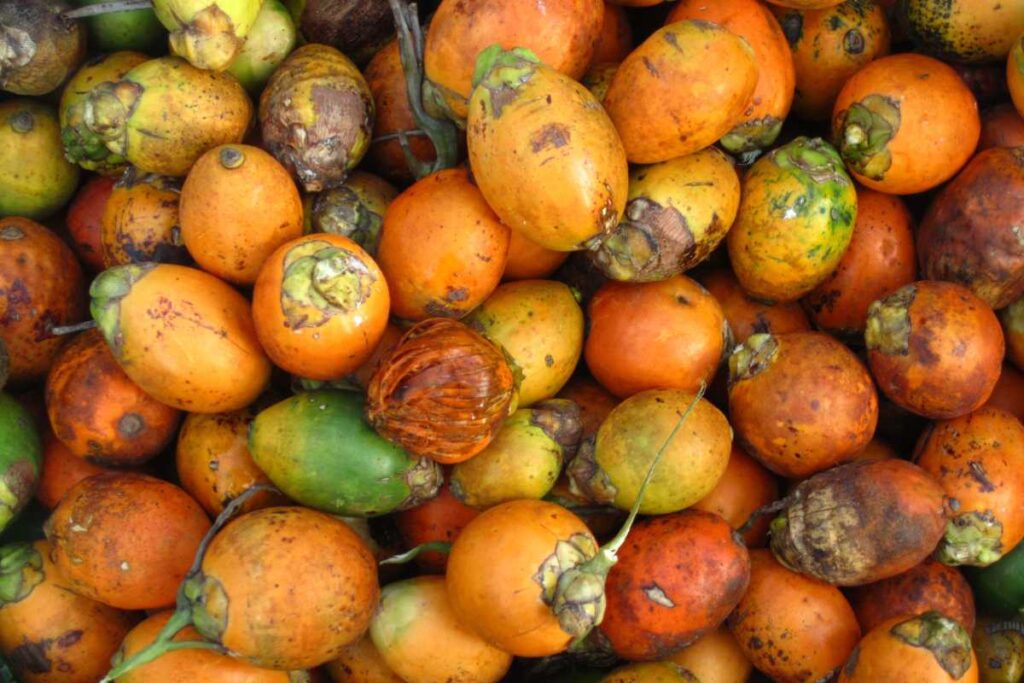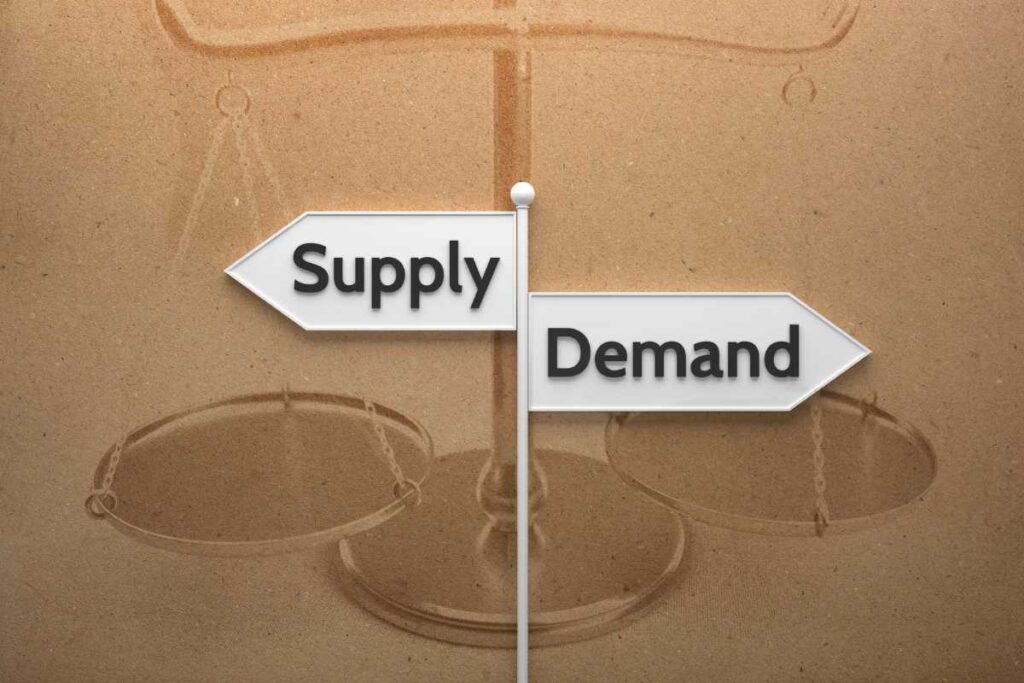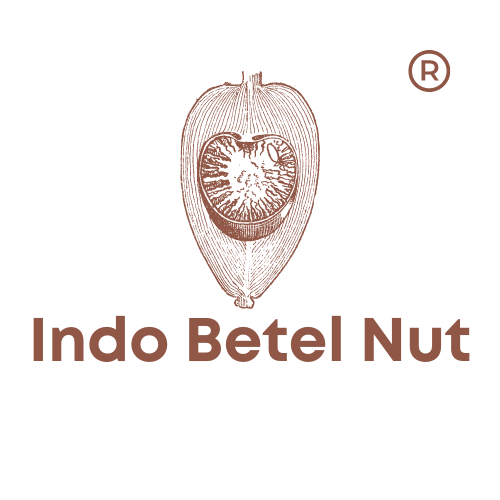Betel Nut Price in Indonesia 2023: High-Quality & Affordable

Are you curious about the betel nut market in Indonesia? Wondering how understanding Areca Catechu prices can impact consumers and businesses in Singapore? Look no further for product details from a reliable supplier!
Indonesia, known for its rich cultural heritage and diverse agricultural sector, is also a significant player in the betel nut industry. With its vast landscapes and favorable climate conditions, the country has become a hub for cultivating Areca catechu, commonly known as betel nuts. These small yet mighty seeds have gained popularity not only locally but also internationally in countries like Singapore, Thailand, and Bangladesh. The harvested area for betel nuts continues to expand, making Indonesia a major contributor to the global betel nut market.
Understanding betel nut prices, particularly for Areca Catechu from Indonesia, is crucial for consumers. The affordability of this product directly impacts purchasing decisions and budget planning. Whether used for traditional practices or enjoyed as a snack, being aware of price fluctuations is important. Stay informed about product details and payment options to make informed choices.
Businesses operating in the betel nut market also rely on a thorough understanding of prices. Pricing strategies play a pivotal role in determining profitability. Factors such as supply and demand dynamics, production costs, market trends, figures, payment, pieces, and areca nuts all influence how businesses set their prices to remain competitive while maximizing revenue.
So join us on this journey through Indonesia’s vibrant betel nut market! Discover the potential growth opportunities within this industry and unravel the impact that price knowledge can have on both consumers and businesses alike. Explore Singapore ton FOB Jakarta product details and the benefits of using a double jute bag.
Factors Influencing Betel Nut Pricing

Supply and Demand Dynamics in the Betel Nut Industry
The price of betel nuts in Indonesia is heavily influenced by the interplay between supply and demand dynamics. Balancing production levels with consumer demand for areca pieces is crucial to maintaining stable pricing in this industry. Payment for betel nuts in Indonesia is typically made in Singapore dollars.
When there is a higher demand for betel nuts, but the growth of Indonesia areca cannot keep up, prices tend to rise. This can occur due to various factors such as increased consumption, exports demands, or even shifts in cultural practices. On the other hand, when the supply of imports exceeds the demand, prices may decrease as producers try to offload their excess stock.
The fluctuating nature of supply and demand creates an environment where the export price and import price of Indonesia areca can experience significant volatility. To navigate these fluctuations effectively, farmers and traders must closely monitor market trends and adjust their production levels accordingly to ensure growth.
Seasonal Variations and Harvest Cycles
Seasonal variations in Indonesia’s areca industry play a crucial role in determining the availability and export price of betel nuts. The growth period of betel nut trees is influenced by seasonal changes throughout the year.
In Indonesia, the growth of the areca tree is crucial for the betel nut industry. There are typically two major harvest seasons for betel nuts: the main season and the off-season. During the main season, which usually occurs between November and February, there is a higher abundance of fresh betel nuts available in the market. As a result, prices tend to be relatively lower during this period. The ton fob jakarta price of betel nuts is influenced by factors such as sunlight and weather conditions.
Conversely, during the off-season (typically from May to July), when fresh supplies of Indonesia areca nuts are scarce due to reduced harvesting activity, prices tend to increase significantly. This scarcity drives up demand for stored or imported betel nuts, leading to higher prices for consumers. The growth in imports of Indonesia areca nuts during this period contributes to the increased prices.
Understanding these seasonal variations in export price and average is essential for both buyers and sellers in managing their expectations regarding availability and pricing of sun imports throughout the year.
Impact of Climate Conditions on Betel Nut Production
Climate conditions have a direct impact on the production of areca nuts, affecting yield, quality, and ultimately the export price. The growth and development of areca nut trees are highly sensitive to environmental factors such as temperature, rainfall, and humidity. These factors play a crucial role in determining the success of imports and exports, prompting an inquiry into their influence on the market.
Excessive rainfall or prolonged droughts can have detrimental effects on betel nut trees and their growth. Flooding may cause root rot and damage the overall health of the trees, leading to reduced production and imports. Conversely, drought conditions can result in water stress, affecting the size and quality of the nuts produced and prompting an inquiry into their viability.
Temperature fluctuations can also impact areca nut production. Extreme heat or cold spells during crucial growth stages can disrupt the reproductive process of the trees, resulting in lower yields. This can have implications for imports of areca nuts to the US. If you are interested in sourcing areca nuts, feel free to send an inquiry.
These climate-related challenges pose risks to betel nut farmers, especially in the US. The adverse weather conditions often lead to increased production costs for areca farmers. When crop yields are affected, farmers may need to invest more resources into maintaining their plantations or resort to importing betel nuts from other regions. These imports are necessary to meet the demand in the US market. However, these additional costs incurred due to imports are then reflected in higher prices for consumers. If you are a consumer interested in purchasing betel nuts, you can send an inquiry to learn more about the availability and pricing.
Betel Nut Grades and Quality

Betel nut, also known as areca nut, is classified into different grades based on its quality standards. These product details play a significant role in determining the pricing variations among betel nuts in Indonesia. If you have any inquiry about imports of betel nuts to the US, feel free to contact us.
Differentiation based on grades and quality standards: Determining factors for price variations.
To ensure consistency and transparency in trade, the product details of areca imports are categorized into various grades based on specific quality standards. The grading process takes into account several determining factors that influence price variations. Inquire now for more information.
-
Size: One of the primary factors considered during grading of areca is the size of the betel nut. Larger-sized nuts are generally preferred due to their perceived higher value and increased chewing satisfaction. For more product details or to make an inquiry, please contact us.
-
The color of areca nuts, also known as betel nuts, can vary from light brown to dark brown or even reddish-brown. Darker-colored nuts are often associated with better quality and fetch higher prices compared to lighter-colored ones. In the US, there is an inquiry into the quality and pricing of areca nuts.
-
Moisture Content: The moisture content of areca nuts in the US plays a crucial role in determining their grade. Nuts with optimal moisture levels are considered superior as they retain their freshness and taste for a longer duration.
-
Texture: The texture of Areca nuts, also known as betel nuts, contributes to their overall grade classification in the US. Nuts with a smooth texture are often preferred over those with rough or uneven surfaces.
By considering these factors, traders can assess the overall quality of areca nuts and assign them appropriate grades that reflect their market value accurately in the US.
Pricing variations among different grades: Higher quality commands premium prices.
In the world of betel nut trading, it’s no surprise that higher-quality areca products command premium prices in the US. Consumers in the US are willing to pay more for areca nuts that offer superior taste, freshness, and overall experience. This demand for premium quality areca nuts creates a pricing variation among different grades in the US market.
For instance, betel nuts, such as the premium quality areca nuts, or grade A areca nuts, are known to fetch higher prices in the US market due to their exceptional characteristics. These top-tier areca nuts often exhibit larger sizes, darker colors, optimal moisture content, and a smoother texture. Their superior quality makes them highly sought after by US consumers who value the best chewing experience.
On the other hand, lower-grade betel nuts with smaller sizes, lighter colors, higher moisture content, rough textures, or from other regions such as the US may be priced comparatively lower. While they may not meet the standards of premium-quality areca nuts, they still cater to consumers looking for more affordable options without compromising on taste entirely.
Factors affecting grading process and price differentials: Criteria such as size, color, moisture content.
The grading process of betel nuts, also known as areca, is influenced by several factors that directly impact price differentials. Let’s take a closer look at some of these key criteria.
-
Size: As mentioned earlier, the size of areca nuts, also known as betel nuts, has a significant influence on their grade classification and subsequent pricing. Larger-sized areca nuts are generally associated with better quality and command higher prices due to their perceived value.
-
Color: The color of areca nuts, also known as betel nuts, is another crucial factor considered during grading. Darker-colored areca nuts are often preferred as they are believed to possess richer flavors and better overall quality compared to lighter-colored ones.
-
Moisture Content: Betel nuts with optimal moisture levels, such as those found in areca, tend to have a longer shelf life and retain their flavor for an extended period. Hence, lower moisture content, specifically in areca, is desired during the grading process since it indicates better quality and contributes to higher prices.
-
Texture: The texture of areca betel nuts plays a role in determining their grade as well. Nuts with smooth surfaces are generally considered more desirable and of higher quality compared to those with rough or uneven textures.
These factors, along with others such as aroma, taste, overall appearance, and areca nuts, are carefully evaluated during the grading process. The resulting grade assigned to each betel nut reflects its quality level and directly influences its market value.
Cultivation Costs and Farming Practices

Expenses involved in betel nut cultivation
In the world of betel nut farming, there are various expenses that come into play. These expenses include inputs such as areca nuts, seeds, fertilizers, and labor costs. Let’s take a closer look at each of these factors.
-
Seeds: The initial investment in high-quality betel nut seeds is crucial for a successful harvest. Farmers need to ensure they source their seeds from reputable suppliers to guarantee healthy and productive plants.
-
Fertilizers: Betel nut trees require proper nutrition to grow robustly and produce abundant nuts. Fertilizers play a vital role in providing essential nutrients to the soil, ensuring optimal growth conditions for the trees.
-
Labor costs: Cultivating betel nuts involves significant manual labor throughout various stages, including planting, weeding, pruning, and harvesting. Skilled labor is required to carry out these tasks efficiently, contributing to overall expenses.
It’s important for farmers to carefully consider these expenses when planning their cultivation activities. By investing in high-quality seeds and providing adequate nutrition through fertilization, they can set a strong foundation for a successful harvest.
Farming techniques impact on pricing
The choice of farming techniques can have a significant impact on the final pricing of betel nuts. Let’s explore how different practices influence the cost structure:
-
Efficient practices reduce costs: Implementing efficient farming techniques can help reduce overall cultivation expenses. For example, adopting mechanized methods for certain tasks like weeding or harvesting can save both time and money compared to manual labor-intensive approaches.
-
Optimal use of resources: Proper management of resources such as water and land can also contribute to cost savings during betel nut cultivation. Employing irrigation systems that maximize water efficiency or utilizing available land effectively can lead to higher productivity without increasing input costs significantly.
By embracing innovative farming techniques and optimizing resource utilization, farmers can lower their production expenses. Ultimately, these cost savings can positively influence the final pricing of betel nuts.
Labor costs influence on betel nut pricing
Labor costs play a crucial role in determining the overall expenses incurred during betel nut cultivation. Several factors contribute to the influence of labor costs on pricing:
-
Skilled labor requirements: Cultivating betel nuts demands skilled labor capable of performing various tasks with precision. From planting saplings to pruning trees and harvesting ripe nuts, each step requires expertise. Hiring skilled laborers often comes at a higher cost, impacting the overall expenses associated with cultivation.
-
Harvested area: The size of the cultivated area directly affects the amount of labor required for maintenance and harvesting. Larger areas demand more workers, leading to increased labor costs. Farmers need to consider this aspect when planning their cultivation activities and estimating potential expenses.
While labor costs may pose a challenge, it is essential to prioritize quality and efficiency when hiring workers for betel nut farming. Skilled individuals who understand the intricacies of cultivating these nuts can greatly contribute to higher yields and better-quality produce.
Market Demand and Consumption Patterns

Analysis of Domestic and International Market Demand for Betel Nut
The betel nut industry in Indonesia is driven by both domestic and international market demand. Understanding the factors that influence this demand is crucial for stakeholders in the betel nut market.
Domestic Market Demand Analysis
In Indonesia, betel nut consumption has deep cultural roots and is deeply embedded in local traditions. The domestic market demand for betel nuts is primarily driven by the following factors:
-
Cultural Practices: Betel nut chewing holds significant cultural importance in many Indonesian communities. It is often seen as a symbol of hospitality, socialization, and even used during traditional ceremonies. These cultural practices contribute to the consistent demand for betel nuts within the country.
-
Health Beliefs: Some individuals believe that betel nuts have medicinal properties or provide certain health benefits such as improved digestion or increased energy levels. These beliefs contribute to sustained domestic demand, particularly among those who value traditional remedies.
-
Social Bonding: Betel nut chewing is often associated with social interactions and bonding among friends, family members, or colleagues. It serves as a means to connect with others and share experiences, making it an integral part of social gatherings.
International Market Demand Analysis
Beyond domestic consumption, there is also a growing international market demand for Indonesian betel nuts due to several factors:
-
Diverse Applications: Betel nuts are not only consumed directly but are also utilized in various industries such as medicine, cosmetics, and food processing. The versatility of its applications has fueled international interest and demand.
-
Global Cultural Exchange: Migration patterns have led to the spread of cultural practices involving betel nut consumption beyond Indonesia’s borders. Communities living abroad often seek out betel nuts as a way to maintain their cultural traditions, creating a steady overseas market demand.
-
Expanding Asian Markets: Asian countries, particularly those with cultural ties to betel nut consumption, are emerging as significant importers of Indonesian betel nuts. The demand from these markets is driven by the presence of diaspora communities and an increasing interest in traditional practices.
Factors Influencing Consumption Trends in Indonesia’s Betel Nut Market
Several factors shape the consumption trends within Indonesia’s betel nut market. These include:
-
Economic Factors: The price of betel nuts plays a crucial role in determining consumption patterns. Fluctuations in the betel nut price can directly impact demand, especially for lower-income individuals who may be more sensitive to changes in affordability.
-
Availability and Accessibility: The accessibility of betel nuts influences their consumption patterns. In areas where they are readily available, such as rural regions or local markets, the demand tends to be higher compared to urban areas where they may be less accessible.
-
Urbanization and Changing Lifestyles: Rapid urbanization and changing lifestyles have led to shifts in consumer preferences towards convenience foods and modern snacks. This has impacted the demand for traditional products like betel nuts, as younger generations may opt for alternative options.
Role of Cultural Practices and Traditions in Shaping Demand
Cultural practices and traditions play a significant role in shaping the demand for betel nuts in Indonesia. These practices contribute to its sustained popularity despite changing trends:
-
Symbolism and Rituals: Betel nut chewing is deeply rooted in symbolism and rituals associated with hospitality, respect, and social bonding. Its significance during ceremonies or social gatherings ensures its continued demand among those who value these traditions.
-
Preserving Heritage: For many Indonesians, consuming betel nuts is a way to preserve their cultural heritage and maintain a connection with their ancestors’ customs. This sense of identity drives the demand among individuals who seek to uphold their traditions.
-
Tourism Impact: Indonesia’s vibrant tourism industry also contributes to the demand for betel nuts. Visitors are often intrigued by the cultural significance of betel nut chewing and may engage in it as part of their immersive experience, further driving demand.
Competition and Market Structure

Overview of the competitive landscape in the betel nut industry
In the bustling betel nut industry of Indonesia, competition is fierce as numerous players strive to capture a slice of the market. The Indonesian archipelago is known for its rich biodiversity and favorable climate conditions that facilitate the cultivation of betel nuts. As a result, there are a significant number of suppliers, distributors, and market players vying for their share.
The competitive landscape in this industry is characterized by both large-scale commercial operations and small-scale local producers. Large companies often have extensive networks and resources that enable them to dominate certain regions or even nationwide distribution. On the other hand, smaller local producers cater to niche markets and focus on quality rather than quantity.
Impact of competition on pricing dynamics within the industry
Competition plays a pivotal role in shaping the pricing dynamics within the betel nut industry in Indonesia. With multiple suppliers and distributors competing for customers, prices can fluctuate depending on various factors such as supply and demand, production costs, transportation expenses, and market trends.
When competition intensifies among betel nut suppliers, they may resort to price adjustments to gain a competitive edge. This can lead to price wars where companies lower their prices to attract more buyers. While this may benefit consumers initially with lower prices, it can have adverse effects on farmers’ livelihoods if they are forced to sell their produce at significantly reduced rates.
Conversely, when demand outstrips supply due to unforeseen circumstances like natural disasters or disease outbreaks affecting crops, competition can drive prices upward. In such situations, suppliers have more leverage over pricing decisions as scarcity drives up consumer willingness-to-pay.
Market players’ role in determining the supply-demand balance
Market players play a crucial role in determining the delicate balance between supply and demand within the Indonesian betel nut industry. Their actions directly influence how much product reaches consumers’ hands while considering market conditions and consumer preferences.
Suppliers, as key market players, are responsible for ensuring a steady supply of betel nuts. They need to monitor factors such as weather patterns, pest infestations, and disease outbreaks that can affect crop yields. By assessing these risks and implementing appropriate mitigation strategies, suppliers can help maintain a stable supply chain.
Distributors also play an essential role in the supply-demand balance by bridging the gap between suppliers and consumers. They are responsible for efficiently transporting betel nuts from production areas to various markets across Indonesia. Their ability to optimize logistics and distribution networks ensures that betel nuts reach consumers promptly.
Market players must carefully analyze market trends, consumer preferences, and competitor strategies to gauge demand accurately. This enables them to adjust their production levels accordingly, preventing oversupply or shortage situations. By aligning their operations with demand patterns, market players contribute to maintaining a healthy equilibrium in the betel nut industry.
Local and Regional Market Variations

Price disparities across regions within Indonesia
Betel nut prices in Indonesia can vary significantly from one region to another. This is primarily due to a combination of factors such as production, demand, transportation costs, and local market dynamics. Let’s explore some of the key reasons behind these regional price differences.
-
Production: Different regions in Indonesia have varying levels of betel nut production. Some areas may have higher yields and more efficient farming practices, resulting in lower production costs and subsequently lower prices. On the other hand, regions with lower production volumes may experience higher prices due to limited supply.
-
Transportation Costs: The cost of transporting betel nuts from production areas to different markets plays a crucial role in determining its final price. Regions that are closer to major transportation hubs or ports, like Jakarta, tend to have lower transportation costs compared to more remote areas. These reduced logistical expenses can contribute to lower overall prices.
-
Local Market Dynamics: Each region within Indonesia has its own unique market dynamics influenced by consumer preferences and cultural traditions. For example, certain regions may have a higher demand for betel nuts due to cultural practices like chewing them as part of social gatherings or religious ceremonies. This increased demand can drive up prices in those specific areas.
-
Supplier Competition: The presence of multiple suppliers within a region can also impact betel nut prices locally. When there is healthy competition among suppliers offering similar products, it often leads to more competitive pricing as they strive to attract customers by offering better deals or quality products.
Factors contributing to regional price differences within the country’s markets
To understand the variations in betel nut prices across different regions in Indonesia, it is essential to consider several factors that contribute to these disparities:
-
Import/Export Prices: The international trade of betel nuts can influence domestic prices within Indonesia’s markets. Fluctuations in import or export prices can impact the overall supply and demand dynamics, thereby affecting regional betel nut prices.
-
Product Details: Variations in product quality, size, and freshness can lead to price differences within the markets. Suppliers who offer superior quality betel nuts may charge a premium for their products compared to those with lower-quality offerings.
-
Quantity and Volume: Bulk purchases or large-scale orders often result in discounted prices. Buyers who purchase betel nuts in larger quantities may enjoy better pricing options compared to those buying smaller quantities.
-
Growth Destinations: Regions that have experienced significant economic growth or urbanization may witness higher betel nut prices due to increased purchasing power and demand from a growing population.
Diverse local market dynamics & consumer preferences influencing prices
The diverse local market dynamics across Indonesia significantly impact betel nut prices. Cultural practices, consumer preferences, and regional traditions all play a role in shaping these dynamics:
-
Cultural Practices: Betel nuts hold cultural significance in various regions of Indonesia, where they are commonly consumed during social gatherings or traditional ceremonies. This cultural attachment can drive up demand and subsequently increase prices within specific areas where such practices are prevalent.
-
Consumer Preferences: Different regions may have varying preferences. Factors such as taste, texture, color, and aroma can influence consumer choices and affect pricing accordingly.
-
Regional Traditions: Some regions have long-standing traditions associated with betel nut consumption that contribute to higher demand and subsequently influence local market prices. These traditions create a unique market dynamic that differentiates one region from another.
Economic and Trade Factors

Macroeconomic influences affecting betel nut prices in Indonesia
The price of betel nuts in Indonesia is influenced by various macroeconomic factors that impact the overall economy. These factors play a significant role in determining the supply and demand dynamics, which ultimately affect the pricing of betel nuts.
One key factor is exchange rates. Fluctuations in currency exchange rates can have a direct impact on the cost of imports and exports. When the Indonesian Rupiah strengthens against other currencies, it becomes more expensive for foreign buyers to purchase betel nuts from Indonesia. This can lead to a decrease in demand and subsequently lower prices. On the other hand, if the Rupiah weakens, it becomes cheaper for foreign buyers to import betel nuts, potentially increasing demand and driving up prices.
Another crucial macroeconomic factor is inflation. Inflation erodes purchasing power and affects consumer behavior. If inflation is high, people may have less disposable income to spend on non-essential items like betel nuts. This reduced demand could result in lower prices as sellers try to attract customers with competitive pricing.
Import/export policies also play a role in determining betel nut prices. Government regulations regarding imports and exports can influence market conditions and pricing dynamics. For instance, restrictions or tariffs on imported betel nuts may limit supply, leading to higher prices domestically. Conversely, when export policies are relaxed or incentivized, it can encourage greater production and exportation of betel nuts, potentially impacting domestic pricing as well.
Exchange rates, inflation, and import/export policies’ impact on pricing
Exchange rates have a direct impact on the competitiveness of Indonesian betel nut exports. When the Rupiah appreciates against major trading partner currencies such as the US Dollar or Euro, it makes Indonesian betel nuts relatively more expensive for international buyers. Consequently, this could reduce demand for Indonesian exports and put downward pressure on prices.
Inflation affects the purchasing power of consumers, which can indirectly influence betel nut prices. If inflation is high, people may have less disposable income to spend on non-essential items like betel nuts. As a result, demand for betel nuts may decrease, leading to lower prices as sellers try to attract customers with competitive pricing.
Import/export policies implemented by the Indonesian government can have both direct and indirect effects on betel nut prices. For instance, if there are restrictions or tariffs on imported betel nuts, it limits the supply available in the domestic market. This reduced supply could increase domestic prices due to scarcity. On the other hand, when export policies are relaxed or incentivized, it encourages greater production and exportation of betel nuts. This increased supply in international markets may lead to lower domestic prices as sellers compete globally.
International trade dynamics shaping betel nut pricing trends
International trade dynamics play a crucial role in shaping the pricing trends of Indonesian betel nuts. The global demand and supply for this commodity are influenced by various factors such as consumer preferences, geopolitical developments, and competition from other producing countries.
The total exports of Indonesian betel nuts contribute significantly to their pricing trends. When there is a surge in global demand for these nuts, driven by factors such as increasing popularity or cultural practices in certain regions, it creates upward pressure on prices due to limited availability. Conversely, if there is a decline in global demand or increased competition from other producing countries like India or Myanmar, it could lead to downward pressure on prices as suppliers seek to maintain market share.
Export standards also impact betel nut pricing. Compliance with quality standards set by importing countries can affect market access and price premiums. Meeting stringent quality requirements enables Indonesian exporters to command higher prices for their products compared to competitors who fail to meet these standards.
Price Fluctuations and Market Trends

Historical price trends and patterns in the Indonesian betel nut market
The betel nut market in Indonesia has witnessed various historical price trends and patterns over the years. These trends have been influenced by several factors, including supply and demand dynamics, economic conditions, and cultural practices.
One notable trend pattern in the Indonesian betel nut market is the cyclicality of prices. Historically, there have been periods of both high and low prices for betel nuts. This cyclicality can be attributed to seasonal variations in supply, as well as fluctuations in demand. For example, during festive seasons or cultural events where betel nut consumption is high, prices tend to surge due to increased demand. On the other hand, during off-peak periods when demand is relatively low, prices may experience a decline.
Another important aspect of historical price trends is the impact of external factors such as weather conditions on supply. Betel nut cultivation heavily relies on favorable weather conditions for optimal growth. Adverse weather events like droughts or heavy rains can significantly affect production levels, leading to noticeable fluctuations in prices.
Analysis of recent price fluctuations and volatility in the industry
In recent times, the Indonesian betel nut market has experienced significant price fluctuations and volatility. These rapid changes can be attributed to various factors that influence supply and demand dynamics.
One factor contributing to recent price fluctuations is changing consumer preferences. As societal norms evolve, there has been a shift away from traditional practices involving betel nut consumption. This change in consumer behavior has resulted in a decrease in demand for betel nuts, leading to downward pressure on prices.
Global economic conditions play a crucial role in determining price volatility within the industry. Economic downturns or currency devaluations can impact purchasing power and subsequently affect demand for non-essential goods like betel nuts. Consequently, this can lead to unpredictable shifts in prices.
Furthermore, government regulations and policies also influence price fluctuations. Changes in import/export regulations, taxes, or subsidies can have a direct impact on the cost of betel nuts, thereby affecting market prices.
Factors contributing to price instability and emerging market trends
Several factors contribute to price instability in the Indonesian betel nut market, while also shaping emerging market trends.
One prominent factor is the reliance on traditional cultivation methods. Betel nut production in Indonesia often relies on small-scale farmers who employ traditional farming techniques. This dependence on manual labor and limited access to modern agricultural practices can result in inconsistent yields and supply disruptions, leading to price instability.
Another contributing factor is the lack of diversification within the betel nut industry. The narrow focus on betel nuts as a primary cash crop makes it susceptible to external shocks. Diversification efforts that encourage farmers to cultivate alternative crops could help mitigate price volatility by reducing dependency on a single commodity.
Changing consumer preferences towards healthier lifestyles have influenced emerging market trends within the betel nut industry. Increasing awareness about potential health risks associated with betel nut consumption has led some consumers to seek alternatives or reduce their consumption altogether. This shift in demand patterns has prompted innovation within the industry, with manufacturers developing products that cater to health-conscious consumers.
Value Chain Analysis
In the world of betel nuts, understanding the value chain is crucial. The intricate web of stakeholders and the processes they undertake greatly influence the final price of betel nuts in Indonesia. By examining this value chain, we can gain valuable insights into how various factors contribute to the pricing dynamics.
Impact of the Betel Nut Value Chain on Pricing Decisions
The betel nut value chain encompasses all the activities involved in bringing betel nuts from their production to consumption. Each step in this chain adds a certain level of value to the product, ultimately impacting its price. Let’s take a closer look at some key aspects that shape pricing decisions within this value chain:
-
Production: The cultivation and harvesting of betel nuts lay the foundation for their market value. Factors such as weather conditions, crop yield, and farming techniques directly affect supply levels and subsequently impact prices.
-
Processing: After harvest, betel nuts undergo various processing stages. This includes cleaning, sorting, drying, and packaging. The quality and efficiency of these processes play a significant role in determining prices.
-
Distribution: The transportation and logistics involved in moving betel nuts from producers to consumers also contribute to pricing decisions. Factors like distance, infrastructure, storage facilities, and transportation costs influence the final price paid by consumers.
-
Marketing: Effective marketing strategies can create higher demand for betel nuts, leading to increased prices. Branding efforts that highlight quality attributes or unique selling points can position certain products at a premium price point.
-
Retailing: Finally, retailers play a vital role in setting consumer prices based on factors such as location convenience, competition within local markets, and overall market demand.
Understanding how each stage impacts pricing allows us to recognize potential opportunities for cost optimization or differentiation strategies along the value chain.
Key Stakeholders Influencing Prices within the Value Chain
Several stakeholders hold significant influence over betel nut prices in Indonesia. These key players shape pricing decisions through their involvement in different stages of the value chain:
-
Farmers: As primary producers, farmers’ decisions regarding cultivation practices and crop yield directly impact the overall supply of betel nuts, thereby influencing prices.
-
Processors: Processors play a crucial role in determining the quality and value of betel nuts through their processing techniques. Their ability to efficiently carry out tasks such as cleaning, sorting, and packaging affects the final price paid by consumers.
-
Wholesalers: Wholesalers act as intermediaries between processors and retailers or distributors. They often negotiate prices with both parties based on market conditions, demand levels, and transportation costs.
-
Retailers: Retailers have direct contact with consumers and are responsible for setting the final price of betel nuts at the point of sale. Factors such as location, competition, and consumer demand influence their pricing decisions.
-
Consumers: Ultimately, consumers have a significant impact on betel nut prices through their purchasing behavior. High demand can drive up prices while low demand may lead to price reductions.
By understanding these key stakeholders and their roles within the value chain, we can better comprehend how pricing decisions are made and identify potential areas for intervention or improvement.
Value Addition’s Effect on Betel Nut Prices in Indonesia
Value addition refers to enhancing a product’s value through various means during its journey along the value chain. In the case of betel nuts in Indonesia, value addition can significantly impact pricing dynamics:
-
Quality Enhancement: By implementing improved processing techniques or adopting quality control measures throughout production and processing stages, betel nut suppliers can enhance their product’s perceived value. This enables them to command higher prices in the market.
-
Product Differentiation: Value addition efforts that focus on unique packaging designs or the development of specialized betel nut varieties can create a sense of exclusivity and differentiation. This allows suppliers to position their products at higher price points compared to generic alternatives.
-
Market Development: Investing in marketing and promotional activities can increase consumer awareness and demand for betel nuts. Effective branding strategies that highlight value-added attributes, such as organic certification or sustainable sourcing, can justify premium prices.
-
Product Innovation: Introducing innovative betel nut-based products or diversifying into related segments can open up new market opportunities with potentially higher profit margins. This expansion into value-added product lines enables suppliers to command higher prices due to increased perceived value.
Value addition serves as a crucial factor in determining betel nut prices in Indonesia by elevating the product’s overall worth in the eyes of consumers. Suppliers who successfully incorporate value addition strategies often reap the rewards through improved profitability and market positioning.
Government Regulations and Policies
Overview

Government regulations and policies play a crucial role in influencing the pricing of betel nuts in Indonesia. These regulations encompass various aspects, including taxes, tariffs, subsidies, and price control measures. The impact of these regulations on the market dynamics and pricing strategies cannot be understated.
Government Regulations Influencing Betel Nut Pricing in Indonesia
The Indonesian government has implemented several regulations to regulate the pricing of betel nuts. One notable regulation is the imposition of taxes on these products. Taxes are levied at different stages of production and distribution, affecting the final price that consumers pay. These taxes are intended to generate revenue for the government while also ensuring that prices remain within a reasonable range.
Tariffs imposed on imported betel nuts can influence their pricing in Indonesia. By imposing tariffs on imports, the government aims to protect domestic producers by making foreign products relatively more expensive. This measure helps maintain a competitive advantage for local farmers and encourages consumers to purchase locally grown betel nuts.
Furthermore, subsidies provided by the government can have an impact on betel nut prices as well. Subsidies are often given to support farmers or encourage specific agricultural practices. These subsidies can help reduce production costs for farmers, allowing them to offer their products at lower prices without compromising profitability.
Taxes, Tariffs, Subsidies, and Price Control Measures Affecting Prices
Taxes imposed on betel nuts can vary depending on factors such as production volume or import/export status. For instance, there may be different tax rates for small-scale farmers compared to larger commercial producers. Similarly, imported betel nuts may attract higher tariffs than domestically produced ones.
Subsidies provided by the government can also affect pricing dynamics significantly. For example, if the government offers subsidies specifically targeted at increasing betel nut production, it can lead to a surplus in the market. This surplus may drive prices down as suppliers compete to sell their excess produce, benefiting consumers.
Price control measures are another tool utilized by the government to regulate betel nut pricing. These measures involve setting maximum or minimum prices for betel nuts to ensure fair pricing and protect both consumers and producers. By implementing price controls, the government aims to prevent price manipulation and maintain stability in the market.
Impact of Regulations on Market Dynamics and Pricing Strategies
The various regulations imposed by the Indonesian government have a significant impact on market dynamics and pricing strategies within the betel nut industry. For instance, taxes and tariffs can make imported betel nuts more expensive than locally produced ones. This creates an opportunity for domestic producers to offer their products at competitive prices, thereby boosting local production and reducing reliance on imports.
Moreover, subsidies provided by the government can incentivize farmers to increase their betel nut production. This increased supply can lead to lower prices in the market, benefiting consumers who may enjoy more affordable options. However, it is essential to strike a balance between subsidies and market demand to avoid oversupply situations that could negatively impact farmers’ livelihoods.
Price control measures also play a role in shaping pricing strategies within the industry. When maximum price limits are set, suppliers must adjust their strategies accordingly to ensure compliance while maintaining profitability. On the other hand, minimum price controls aim to protect farmers from exploitation by ensuring they receive fair compensation for their efforts.
Market Outlook and Future Predictions

Emerging trends and forecasts for betel nut prices
The betel nut market in Indonesia has been experiencing several emerging trends that are expected to impact the future pricing of this commodity. One of the key factors influencing these trends is the increasing demand for betel nuts in the international market. As more countries become aware of the various uses and benefits of betel nuts, there has been a surge in demand for this product, leading to an upward pressure on prices.
The growing popularity of betel nut-based products such as chewing tobacco and mouth fresheners has further fueled the demand for betel nuts. This trend is expected to continue in the coming years, driving up prices due to increased competition among buyers.
Furthermore, forecasts indicate that there will be a significant increase in nut exports from Indonesia. The country’s favorable climate and abundant resources make it an ideal location for betel nut cultivation, allowing farmers to meet both domestic and international demand. As a result, experts predict that Indonesia will become one of the leading exporters of betel nuts globally.
Anticipated changes in demand and supply dynamics
The anticipated changes in demand-supply dynamics have a direct impact on future pricing of betel nuts in Indonesia. With increasing global awareness about the health benefits associated with consuming natural products like betel nuts, there is likely to be a surge in demand from various consumer segments.
Moreover, as more countries impose restrictions on synthetic alternatives used in chewing tobacco and mouth fresheners, there will be a shift towards natural alternatives like betel nuts. This change is expected to drive up demand even further.
On the supply side, efforts are being made by Indonesian authorities to promote sustainable farming practices for betel nut cultivation. By encouraging farmers to adopt environmentally friendly techniques and providing them with necessary support, it is anticipated that supply will increase steadily over time.
However, challenges such as climate change and pests remain a concern for betel nut farmers. Erratic weather patterns and the threat of pests can significantly impact crop yield, leading to potential supply shortages and subsequent price fluctuations.
Opportunities and challenges for betel nut pricing in Indonesia
The betel nut industry in Indonesia presents both opportunities and challenges. On one hand, the increasing demand for betel nuts provides an opportunity for farmers and traders to command higher prices. As the market expands, there is potential for increased profitability for those involved in the supply chain.
With Indonesia poised to become a major exporter of betel nuts, there are opportunities for economic growth and development within the country. The export market offers the potential for increased revenue and foreign exchange earnings.
However, there are also challenges that need to be addressed. One such challenge is ensuring sustainable farming practices to meet growing demand without compromising environmental integrity. It is crucial to strike a balance between meeting market needs while safeguarding natural resources.
Furthermore, competition from other betel nut-producing countries poses a challenge in terms of pricing competitiveness. To maintain its position as a key player in the global market, Indonesia must focus on improving productivity, quality control measures, and establishing strong trade relationships with importing nations.
Price Comparison with Other Markets

Betel Nut Price Analysis across Different Countries or Regions Globally
They can vary significantly across different countries and regions worldwide. Understanding these price variations is crucial for both buyers and sellers to make informed decisions and assess market competitiveness. Let’s delve into the comparative analysis of betel nut prices in various markets.
-
Southeast Asia
-
Indonesia: As the largest producer of betel nuts, Indonesia offers competitive prices due to its abundant supply. The average price per kilogram ranges from $2 to $4.
-
Malaysia: Betel nut prices in Malaysia are slightly higher compared to Indonesia, ranging between $3 and $5 per kilogram.
-
Philippines: In the Philippines, betel nuts are generally priced at around $4 to $6 per kilogram.
-
-
South Asia
-
India: Betel nut prices in India tend to be relatively lower, ranging from $1.50 to $3 per kilogram.
-
Bangladesh: Similarly, Bangladesh offers affordable betel nuts with an average price of approximately $2 to $4 per kilogram.
-
-
East Asia
-
China: In China, the demand for betel nuts has been increasing steadily in recent years, leading to a rise in prices. The average cost varies between $5 and $7 per kilogram.
-
-
Middle East
-
United Arab Emirates (UAE): Due to its high demand for traditional chewing practices, the UAE imports significant quantities of betel nuts from Southeast Asian countries. Consequently, the price is relatively higher at around $6 to $8 per kilogram.
-
Factors Contributing to Price Variations between Different Markets
Several factors contribute to the price variations observed across different markets:
-
Supply and Demand: The availability of betel nuts within a region directly affects their prices. Countries with abundant supply, like Indonesia, tend to offer lower prices due to the competition among sellers. In contrast, regions with higher demand and limited supply experience higher prices.
-
Transportation Costs: The cost of transporting betel nuts from the production areas to various markets can impact their final price. Longer distances and complex logistics can increase transportation costs, resulting in higher prices for consumers.
-
Quality and Grade: Betel nuts are graded based on factors such as size, freshness, color, and taste. Higher-quality betel nuts often command premium prices compared to lower-grade ones.
-
Trade Policies and Regulations: Import duties, taxes, and trade restrictions imposed by governments can influence betel nut prices in different markets. These policies affect the overall cost structure and may lead to price variations.
Market Competitiveness Assessment Based on Comparative Analysis
Analyzing betel nut prices across different markets allows us to assess market competitiveness effectively. By understanding how a particular market’s pricing compares to others, stakeholders can make informed decisions regarding their buying or selling strategies.
-
Price Ranking: Comparing the average betel nut prices across countries or regions provides insights into their relative competitiveness within the global market. It helps identify which regions offer more favorable pricing options for buyers or better profit margins for sellers.
-
Payment Options: Evaluating payment methods available in different markets is crucial for assessing competitiveness as well. Some markets may have efficient payment systems that facilitate transactions at lower costs compared to others where additional fees or complexities arise.
Industry Perspectives and Expert Insights

In-depth Analysis of Betel Nut Pricing Factors
Industry experts, farmers, traders, and researchers provide valuable insights into the factors that influence its pricing. Through their in-depth analysis, we gain a deeper understanding of the dynamics at play.
One crucial factor affecting betel nut prices is the demand from India. With its rich cultural tradition of chewing betel nuts as a stimulant, India has a significant impact on global prices. When Indian buyers increase their inquiry for betel nuts from Indonesia, it creates upward pressure on rates. The higher the demand from India, the more likely we’ll see an uptick in prices.
Another factor contributing to price fluctuations is weather conditions. Betel nut plants thrive under specific climatic conditions, including ample sunlight and moderate rainfall. If there’s a prolonged period of drought or heavy rains that damage crops, it can lead to lower production levels and subsequently drive prices up.
Betel nut farmers face challenges related to transportation costs and availability of gunny bags for packaging. Gunny bags are commonly used to store and transport betel nuts in Indonesia. However, when there’s a shortage of gunny bags or if their prices double due to supply chain disruptions or increased demand from other industries like coffee or rice, it directly impacts the overall cost structure for farmers.
To illustrate this point further, let’s consider an example: Imagine a farmer who needs 100 gunny bags to pack his harvest. If the price per bag suddenly doubles due to scarcity or high demand elsewhere in the market (e.g., coffee production), it significantly increases his expenses. Consequently, farmers may be forced to pass on these additional costs by raising their selling prices.
Expert Opinions on Influential Factors Shaping Market Developments
In addition to analyzing current factors affecting betel nut pricing, experts also provide valuable insights into future market developments. By understanding these perspectives, we can anticipate potential trends and make informed decisions.
According to industry experts, the betel nut market in Indonesia is expected to witness continued growth in the coming years. The rising demand from India, coupled with increasing popularity in other regions, suggests a positive outlook for prices. However, experts caution that external factors such as government policies and regulations could impact this trajectory.
Furthermore, researchers highlight the importance of sustainable farming practices to ensure long-term viability of the betel nut industry. As consumers become more conscious about environmental issues and ethical sourcing, adopting sustainable cultivation methods becomes crucial for maintaining market competitiveness. Experts emphasize that farmers who prioritize sustainability will likely benefit from higher demand and premium prices.
In terms of future challenges, experts also point out the need for better infrastructure and logistics support within the betel nut supply chain. Improvements in transportation networks and storage facilities can help reduce costs and minimize post-harvest losses. By addressing these bottlenecks, stakeholders can foster a more efficient market environment that benefits both producers and consumers.
Consumer Considerations and Decision-Making

Factors influencing consumer choices based on betel nut prices
Consumers take into consideration a variety of factors that can influence their buying decisions. One of the primary considerations is the balance between quality and affordability. Betel nuts come in various forms, such as whole or split, and are often packaged in double jute bags for convenience. Consumers want to ensure they are getting good value for their money while also receiving high-quality betel nuts.
Affordability is an important factor for many consumers, especially those who consume betel nuts regularly. They want to find products that fit within their budget without compromising on quality. This means considering the price per unit or weight of the betel nuts and comparing it to other available options in the market.
However, simply focusing on affordability alone may not guarantee satisfaction for consumers. Quality plays a crucial role in determining whether customers will be satisfied with their purchase. Consumers want betel nuts that are fresh, flavorful, and have a pleasant aroma. The freshness of the betel nuts can greatly impact their taste and overall experience when consumed.
To make informed decisions as a betel nut consumer, it’s essential to consider both price and quality aspects simultaneously. Finding a balance between these two factors ensures that consumers are getting the best value for their money without compromising on taste or freshness.
The importance of freshness & value perception when making purchasing decisions as a consumer
In addition to considering the price and quality of betel nuts, consumers also place great importance on freshness and value perception when making purchasing decisions. Freshness is crucial because it directly affects the taste and overall enjoyment of consuming betel nuts.
Consumers prefer betel nuts that have been recently harvested or processed as they tend to have better flavor profiles compared to older ones. Freshness can be determined by examining factors such as color, texture, moisture content, and aroma. Betel nuts that are vibrant in color, have a firm texture, and emit a pleasant aroma are often perceived as being fresher.
Value perception refers to the perceived worth of a product in relation to its price. Consumers want to feel like they are getting their money’s worth when purchasing betel nuts. This perception can be influenced by various factors, including packaging, brand reputation, and overall product presentation.
For example, betel nuts that come in double jute bags may be perceived as higher quality compared to those packaged in less durable materials. The packaging itself can convey a sense of value and attention to detail. Brands with a strong reputation for delivering high-quality betel nuts may command a higher perceived value among consumers.
By considering both freshness and value perception, consumers can make more informed decisions about which betel nuts to purchase. They can prioritize products that not only meet their budget requirements but also offer an enjoyable eating experience.
Conclusion
To conclude, the betel nut pricing in Indonesia is influenced by various factors that are crucial to understand for both consumers and businesses. By staying informed and adaptable, individuals can make better decisions regarding betel nut purchases or pricing strategies. Market knowledge plays a vital role in understanding the dynamics of supply and demand, seasonal variations, climate conditions, and cultivation costs. Furthermore, the quality and grading of betel nuts also impact their prices, with different grades having distinct price variations.
It is important to consider market demand and consumption patterns when analyzing betel nut prices in Indonesia. Factors such as domestic and international demand, cultural practices, and traditions shape consumer preferences. Competition within the industry affects pricing dynamics. Understanding the competitive landscape and regional market variations helps identify price disparities across different regions.
Economic factors like exchange rates, inflation rates, import/export policies, as well as government regulations play a significant role in determining betel nut prices. Price fluctuations are common in this market due to historical trends, recent volatility, and market trends. The value chain analysis reveals key stakeholders’ roles in pricing decisions.
Looking ahead to the future of betel nut prices in Indonesia, emerging trends suggest changes in demand-supply dynamics along with opportunities and challenges for pricing strategies. Comparing prices with other markets provides insights into competitiveness.
In conclusion, it is essential for consumers to consider various factors while making purchasing decisions related to betel nuts. Balancing price with quality, freshness, and value is crucial to ensure satisfaction. By following these guidelines and considering expert insights on market developments along with personal preferences as a consumer or business owner involved in the betel nut industry will lead to more informed decision-making.
Betel Nut Price in Indonesia | FAQs
Q1: How does the seasonal variation affect betel nut prices?
Seasonal variations impact betel nut prices due to changes in harvest cycles which affect supply levels leading to fluctuations in prices throughout the year.
Q2: What factors contribute to regional price disparities in Indonesia?
Regional price disparities can be attributed to differences in demand, transportation costs, accessibility, and local market dynamics.
Q3: How do government regulations influence betel nut pricing?
Government regulations such as taxes, tariffs, subsidies, and price control measures can directly impact the cost of betel nuts and subsequently affect pricing dynamics.
Q4: Are there any forecasts for future betel nut prices in Indonesia?
Emerging trends suggest changes in demand-supply dynamics which may lead to fluctuations in betel nut prices. However, accurate predictions are challenging due to various factors influencing the market.
Q5: How do consumers balance price with quality when purchasing betel nuts?
Consumers need to consider factors such as freshness, taste preferences, and value for money when making decisions about purchasing betel nuts. It’s essential to find a balance between affordable prices and satisfactory quality.
Q6: Are there any industry experts who provide insights on betel nut pricing?
Yes, industry experts including farmers, traders, researchers or analysts can offer valuable insights into the factors that influence betel nut pricing and predictions regarding future market developments.
Q7: What role does cultural practice play in shaping the demand for betel nuts?
Cultural practices have a significant impact on the demand for betel nuts as they are often consumed as part of traditional customs or rituals. These practices shape consumer preferences and influence market trends.

